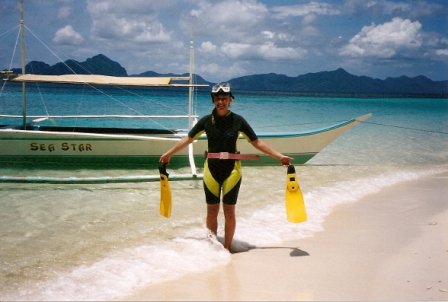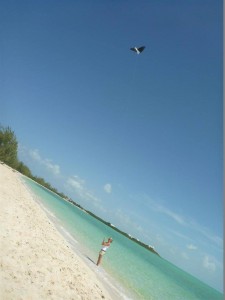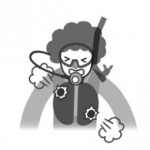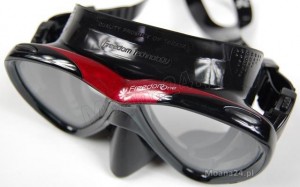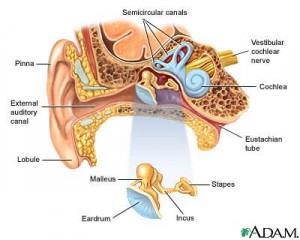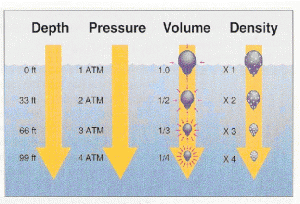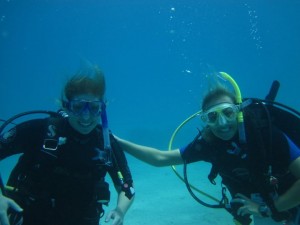Last week, inspired by some people asking me about my life and how I ended up where I am today, I posted my initial feature entitled: How did I get here? The Indirect and Complicated Route to Scuba Diving Happiness – Part 1. At the moment, I am spending time in the Turks and Caicos Islands while starting my own Truli Wetsuits business in Canada and almost every time I meet a tourist, they ask: ”So, how did you end up in Turks and Caicos?” There is a simple answer (I accepted a job offer as Purser on the scuba liveaboard Turks and Caicos Explorer II), but there’s also a way more interesting and convoluted answer which I’m having a lot of fun writing about. In my last post, I ended with me taking a job as an English Teacher in Tokyo, Japan upon graduating from university in Canada and now I will continue to tell my story of finding a way to try scuba diving and adventure on my first backpacker’s trip to The Philippines…
Now that I was unleashed on the big wide world as a Truli independent adult, I was determined to follow my passions and do what I had always wanted to do. 1. I wanted to travel and explore. 2. I wanted to try scuba diving. After working 6 months at the language school I was entitled to some vacation days. All the teachers would talk about their amazing adventures in Thailand and rave about the lovely culture, food, and fantastic shopping, but I didn’t want to do what everyone else was doing already. There was this free magazine for foreigners in Tokyo and there was a page that advertised all of the prices for travel and I noticed that the Philippines was pretty much the same airfare as Thailand. I decided I wanted to go to the Philippines. I went to the international bookstore and bought the Lonely Planet guidebook to the Philippines as well as the Frommer’s guide to South East Asia and started to study where was the best place to go scuba diving. Although the most famous places for scuba diving were advertised as Cebu Island and Boracay, I fell in love when I read about the island of Palawan in the south west side of the country. The guide book described this place as “The Last Frontier”. I booked my flight from Tokyo to Manila and then straight to Puerto Princesa on Palawan and back. I was feeling pretty nervous about this big adventure all on my own, but it was what I had always wanted and I felt like I finally had the opportunity to do something amazing and bold and I did not want to let that pass me by. But luckily for me, I think my enthusiasm inspired some excitement in my co-worker because just at the last minute she decided to join me on my trip! I was stoked!
People had warned me about Manila being super dangerous and I was quite anxious considering I didn’t really know what I was doing. I had booked one night in a little hostel near the airport before we flew the next day to the island, but we needed to call and confirm when we got there. But neither of us had any money or coins for the phone. We were standing by the phone trying to figure out what to do when a man who looked like he was in the military (they were all over the airport) and with a very large gun walked over to us. He generously offered us his phone card so we could use the phone. This was the first of hundreds of positive cross cultural encounters I would make in my life. Although I was still on edge of my new surroundings, the kindness of the “scary” stranger breathed some life and confidence into me as we hopped into a taxi to head to the hotel.
Over the next week we took a Jeepney across the island, which fell off the road at one point. We paid some local guys to travel even further up island by water. They caught us some fish and put us up in a hut on a deserted island with no electricity. But more importantly, they lent me a scuba mask. This was the first time in my life that I swam in an ocean and looked beneath the surface to see the colourful wildlife below. I remember being absolutely enthralled. It’s interesting to think back to that moment and wonder if it relates to how much I love introducing people to scuba diving. I love that I am the one that gives others the opportunity to see all the amazing things below the surface of water.
Our final destination was El Nido, which is on the northern tip of Palawan. We arrived by boat and I faintly remember a light drizzle with rainbows as we arrived with a back drop of tall craggy cliffs jutting out of the ocean amongst the multitude of blue hues of the sea. We immediately signed up for a PADI Discover Scuba Diving course for first thing the next day. I was so elated that not only was I going to get to try scuba diving, but it was going to happen in this exotic little village in the South Pacific! The next morning we went to the dive shop and travelled by boat to a secluded white sandy beach on some island. There were three of us girls and one instructor. Besides my friend and I, the other woman was a Filipino from Manila who, much to my surprise, had never tried scuba diving. She told us her brothers were all instructors and she loved the water, but just never had the chance to go. I could totally relate, but couldn’t believe with all the beautiful waters that surround her country that she could wait
so long! Our instructor made us some lunch and then briefed us on the skills and dive we were about to do. We walked across the white sandy beach and into the ocean to do our “pool skills” and then we swam off together! I felt like a natural and was so excited to see a black and white sea snake! It looked so amazing as it slithered through the water column. I don’t think in all the diving I’ve done since then that I’ve seen anything like that again. So that was the day that opened a whole new world to me and started a journey that has taken me to where I am today!
We desperately wanted to stay longer in the village and do more scuba diving, but alas, I had very responsibly booked a return flight from the town all the way at the southern end of the island and needed another day of travel to get back there, so off we went. As soon as we got back to Tokyo, I was on a mission to figure out how to become a certified PADI Open Water diver as soon as possible, which you can read about in my next blog post!

